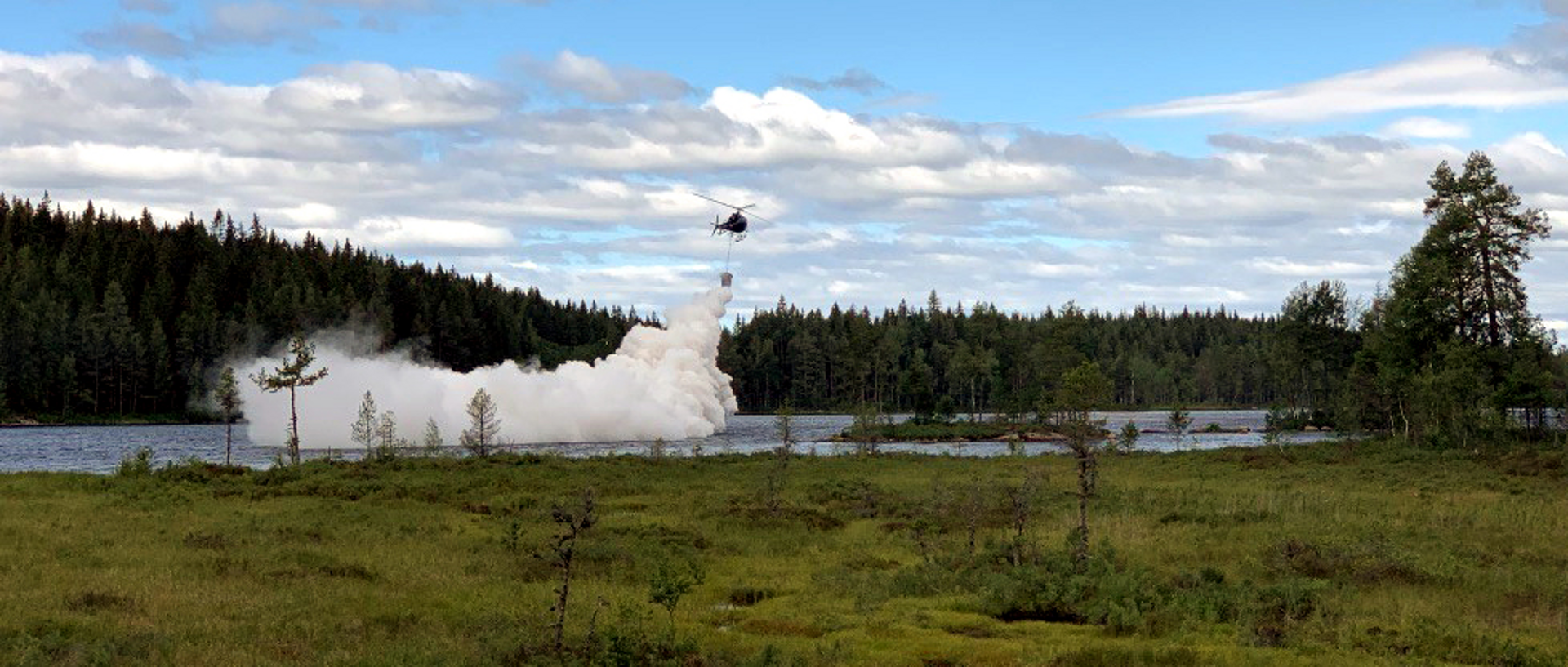
8-Jun-2021 Source: Airbus Helicopters
The acidification of Scandinavia’s lakes has been the subject of study and debate since the 1970s. It is generally accepted to be caused when sulphur and nitrogen oxide in the atmosphere (from human-made pollution) return to Earth as acid rain.
Its effect on the environment ranges from the disappearance of certain fish stocks (roach, minnow, arctic char, trout) in acidic lakes to destroying zooplankton and such phytoplankton as green algae.
To save such species, along with regular pH monitoring and conventions aimed at limiting the cross-border extent of air pollution, Sweden, Finland and Norway have adopted the tactic to lower freshwater pH levels by spraying lime (calcium) on lakes. Employed since the 1980s, the lime effectively neutralises the water’s pH, restoring its natural balance.
As more than 22,000 lakes in Sweden have surface areas in excess of 10 hectares (Norway is close behind with 20,000 lakes), the spreading of lime is assigned to helicopters like those operated by Scandair – a Swedish material distribution company specialising in environmental contracts.
Operating a single Airbus Helicopters-built H125 in 2010, Scandair’s three founding pilots got their start contracting with a lime producer working for the Swedish government to spray powdered lime on lakes. The fleet has since increased to three H125s, with a fourth expected soon, and a staff of seven pilots.
Scandair carries out liming throughout the year, flying above the surface and spraying a swath of 10 metres at a time. “Our customers measure the acidity of lakes around five times a year to keep track,” explained Marius Johansen, the Executive Director of Scandair. “With some, they want us to put the lime on top of the ice so when it melts it mixes with the polluted snow on the lake. Most customers want it done in the summer so it can mix directly.”
Forest for the trees
Another activity for Scandair is dropping clean wood ash on young trees as a forest soil amendment, contracting with private- and government-owned forest holders who have been charged with returning nutrients back to the forest that were removed through logging.
This work must be done in the growing season, so Scandair’s forest work usually starts in May when the snow has melted and roads have hardened, continuing until August. “You have to do it when temperatures are above zero to get the nutrients into the soil,” Johansen said.
To maximise the helicopter’s time in the air for optimum efficiency, Scandair uses a customised truck with a silo that holds six tonnes of material, and two hoistable buckets are continuously in rotation: one being filled while the other is flown on a sling below the H125. “Once you have sprayed, you can just fly back, make the exchange for a full bucket, and go,” Johansen added.
Scandair manufactures its own equipment, including a GPS-controlled bucket system. This allows the pilot at the H125’s controls to simply focus on flying at a slow airspeed of 50 knots while the GPS automatically signals the bucket when to make a drop and how much, depending on speed.

The spraying of lime is a cost-effective method for reducing a lake’s pH levels, restoring its natural balance.
Efficient and hard working
This all leads to an extremely well-organised and hardworking fleet. On average, they’re able to drop some 30 loads per hour from the sling.
Along with lime spraying and forest fertilisation, this year Scandair will carry out approximately 60,000 sling loads with their H125 helicopters. With a hook lift capacity of 1,400 kg, it makes for a lot of material dropped from the air.
At an average of 700 flight hours per helicopter per year, the Scandair fleet is one of the busiest in the area – considering the company also helps out with firefighting when there’s a need. “We’re still flying the H125 after 10 years because it’s the most cost-efficient helicopter out there for these types of operations,” explained Johansen. “We have ordered 16 new helicopters in 10 years. We have a high cycle consumption, so it becomes expensive if we keep them for too long.”
The volume of work for Scandair’s seven pilots hasn’t diminished with the COVID-19 pandemic. Johansen thinks it may even grow once people are able to meet and discuss projects in person. And as long as the environment needs a boost, this niche industry may become mainstream.